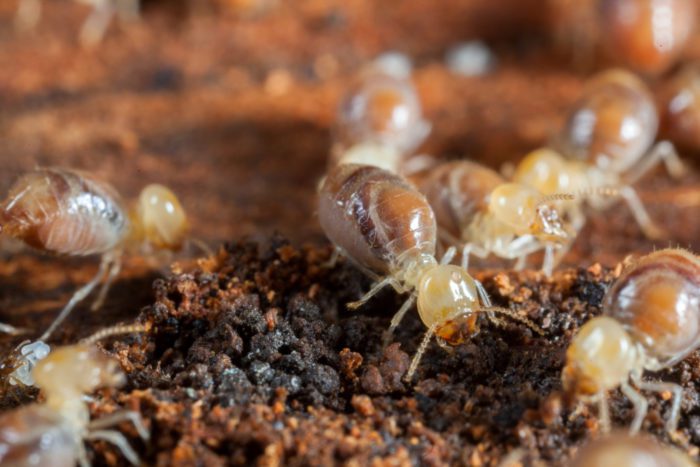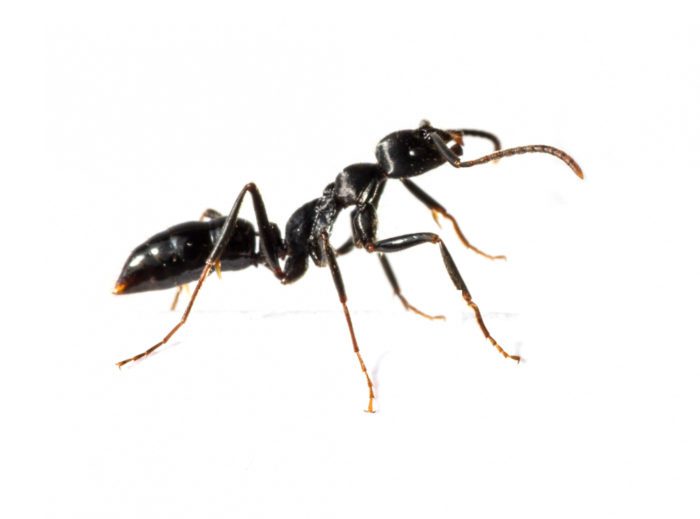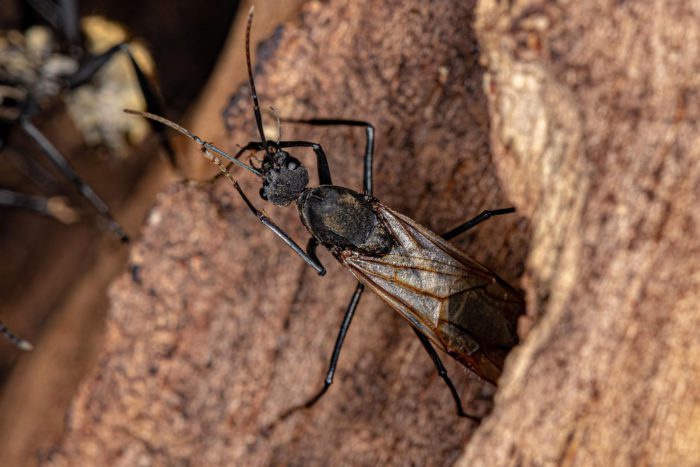You have found some holes in your walls. You may think that they are kick-out holes created by termites. But are you 100 percent sure?
Let’s have one more example, you have found piles of wings on the floors. Can it be termites? Can’t say exactly.
Every flying bug cannot be a termite. Many bugs look like termites and even cause damage that may look like the work of termites.
Important Note: If you're tired of pests and want a reliable solution, then you should definitely consider seeking help from a professional pest control company. DIY solutions can be effective, but if you're dealing with a significant pest infestation, you don't want to rely solely on DIY methods. Pest control companies typically don't charge huge fees. You can fill out this form to receive free quotes from the top local pest control companies, and compare the quotes and see for yourself. Then, finally, your pest problems will be eliminated for good.
It is important to identify termites and their damage. As confusion can cause treating home for the wrong pest.
Termites are easy to confuse, especially the winged ones. And it’s just not the appearance, their signs of damage have often created confusion between termites and other bugs.
In this article, we will first discuss the identifying of termites and then will move forward to the bugs that look like termites but aren’t.
Identifying Termites
To avoid confusion, we have to learn about the appearance of termites and their damage pattern.
The Appearance of Termites:

They are about ¼ to ½ inches in length. The middle portion of the body, known as the thorax, is wide so the whole body is about the same width. Their color can be black or white but they are usually brown.
The flying termites known as swarmers have 2 sets of wings, and both these pairs are equal in length. When comparing wings length with that of the body, the wings extend twice as long as the body. They also have 2 antennae.
What Termite Damage Looks Like:
Mud tubes on the exterior and interior walls. These are created by subterranean termites to travel to and from the food source without being seen.
Tiny kick-out holes in wood with piles of brown fecal pallets nearby and hollow sound when you knock on the wall or wooden structure are other signs of termite rampage.
Bugs Similar to Termites
The bugs are often confused with termites-
Carpenter Ants

The reason why these ants are similar to termites is that they both damage wood and swarm i.e. fly in large numbers during their mating season.
They are 9.5-13 millimeters in length. They have 2 bent antennae over their heart-shaped head and a tapered thorax. Their color may range from reddish-brown to black.
Just like the termites, they have two sets of wings. The front set is longer than the back one. The length of the body and wings are almost the same.
These boreholes in the wood leave the excess behind. The shredded wood left behind by them isn’t easy to spot. Most of the time it’s inside the wall void.
Tunnels created by ants are so clean and smooth that it looks like someone has sanded them on the inside. While in the case of termites, the tunnels are rougher as they’ve been chewed.
Flying Ants

Apart from carpenter ants, there are many more species that can fly. Their mature reproductive ants develop wings so that they can fly and start a new colony through mating.
Flying ants too fly in swarms much like termites. These look just like ants we see crawling in the ground but larger and of course with wings.
Flying ants and carpenter ants have many things in common such as two bent antennae, a three-segment body with a narrow middle portion.
These species are not wood-boring species. They don’t cause any damage at all. But they can still infest our homes and get to our food. So if you see any flying bugs eating your food, then they are flying ants not termites.
Carpenter Bees
The holes created by the carpenter bees into a wood structure for their nest resemble termites’ kick-out holes. Their holes might make us think that we have termites in our homes.
But this is the only common thing between these bugs and termites. If you look at these bees closely, you can easily differentiate them from termites.
They have shiny black bodies and yellow fur on their thorax(middle part of the body). They are 1 inch in length and their bodies are chubby and round. They live independently, not in colonies, so we might only see one of them at a time.
They drill tunnels in wood to make their nest and lay their eggs. Since they live alone, they require small nests and don’t cause much damage as termites or carpenter ants.
Holes created by them are perfectly round and wide around as your finger. Sticky yellow waste similar to yellow stain can be found near their holes. They are mostly found in unfinished and unpainted wood structures.
Powderpost Beetles
Just like termites, these can cause significant structural damage as they feed on wood.
Their size is almost the same as termites, ranging from ⅛ inches to ¾ inches in length. They consist of a round, small head and thorax and a longer abdomen in the back. Their color ranges from reddish to dark brown.
The beetles that fly are known as swarming beetles. These have 2 sets of wings. The front ones are rigid like shells while the rear ones are used for flying.
While they are young, they live in and feed on wood. The adult ones escape the nest after laying eggs in cracks and holes in wood surfaces. They do so by drilling holes in wood surfaces.
These species don’t infest finished woods, they look for unfinished wood which has cracks in it. They usually prefer hardwood such as walnut, hickory, or bamboo.
Tabularized Comparison
| Parameters | Carpenter Ants | Flying Ants | Termites | Carpenter Bees | Powderpost Beetles |
| Antennae shape | Bent | Bent | Straight | – | – |
| Length of wings | Front wings longer than rear wings | Front wings longer than rear wings | Wings twice in length as the body | – | – |
| Body | The middle segment of the body is narrow | Middle narrower than head and back end | Straight, brown, or black body, with no distinct markings | Shiny black body with a patch of yellow fuzz | Classic beetle body shape |
| Holes | – | – | Irregular holes about 1 millimeter in diameter | Perfectly round holes about the diameter of our finger | Pinhead size holes |
| Leftovers | – | – | Leave piles of tiny fecal pallets near holes | Yellow waste and piles of sawdust can be seen around holes | Leave piles of very fine wood powder beneath holes |
Conclusion
Correctly identifying the critters making themselves comfortable at your home is very important.
Whenever you encounter any of these bugs, don’t take it lightly, immediately contact pest control professionals. They will identify the pest and thus come up with the proper method to deal with them accordingly.
It will cost more to get rid of termites than their look-alikes since the damage might be more extensive in case of a termite infestation. But in case your house is infested by any of the other bugs mentioned in this article, the damages could be relatively tame.
So proper identification has to be the first priority. As already mentioned, termite damage is expensive to repair so it’s better to not gamble and take necessary precautions as soon as possible.
That’s it for this article. We hope you were able to find some of the answers you were looking for. Thanks for reading through!

